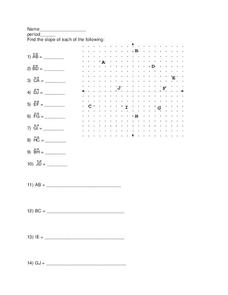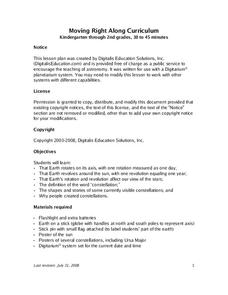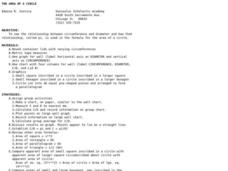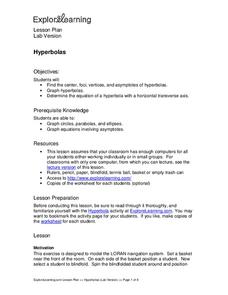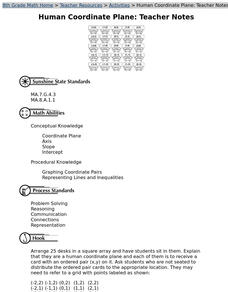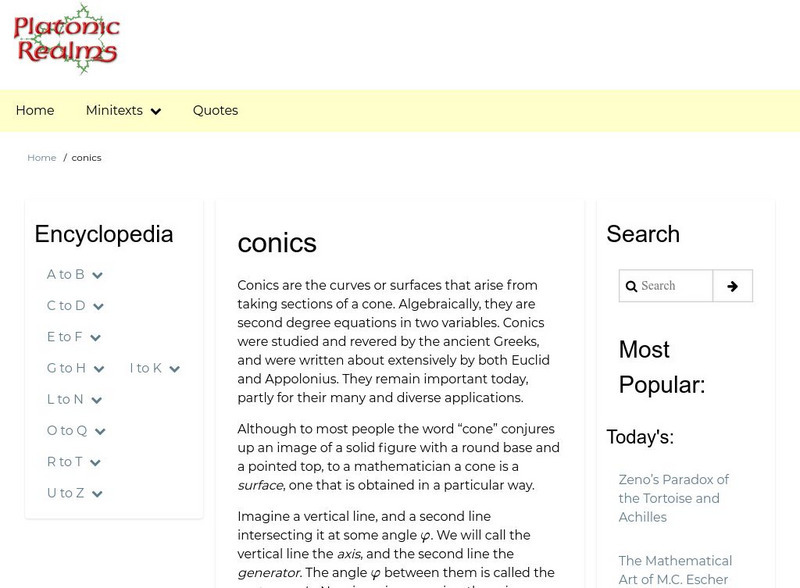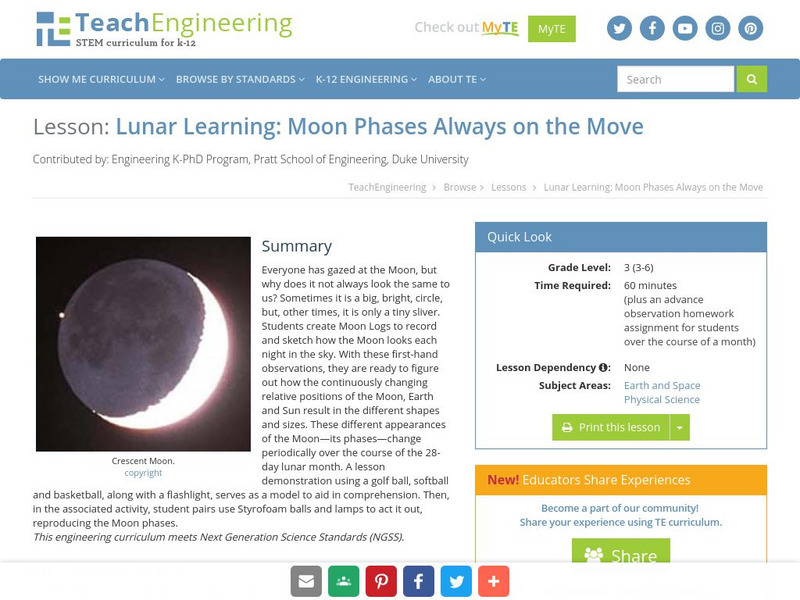Curated OER
Slope
In this slope activity, 9th graders solve and complete 15 different problems that include identifying various points on a grid. First, they find the slope of each line segments listed on the left. Then, students write their response on...
Curated OER
Earth
In this Earth instructional activity, students respond to 5 different questions related to the Earth and its atmosphere. First, they determine the distance from Earth to the Sun and the distance across Earth. Then, students explain how...
Curated OER
Solar System Vocab Word Search
In this science worksheet, learners locate and identify various vocabulary terms related to space science. There are 21 words located in the puzzle.
Curated OER
Earth's Rotation
Students explore the Earth and its rotation. Volunteers model the sun-Earth system to demonstrate that the Earth rotates around the sun. In groups, students simulate "traveling" around the sun and discuss when it is night and day.
Curated OER
Coordinate Grid: Mapping Archeological Sites
Fourth graders discover how to apply the Cartesian coordinate system by figuring out the length and width of their school playground. They determine that pacing is an important tool for the initial mapping of a site. Students conduct a...
Curated OER
"Vary" Bright Days
Students explore how the Earth's axial tilt and revolution around our sun lead to differences in day length through the year. In groups, they create and use a model of the earth on its axis to demonstrate the concepts.
Curated OER
Earth, Sun and Moon
Students investigate that the sun is at the center of the solar system through role play. One student is the sun and one student is the Earth. The students then show how the Earth orbits around the sun. Students view a flashlight and...
Curated OER
Comparison of Images Formed by Plane, Cylindrical (concave side), and Spherical (concave side) Mirrors
Students study mirrors and see how images can be reversed. In this reflection lesson students demonstrate that all mirrors reverse images and that the apparent right to left reversal in a plane mirror is a result of that reversal.
Curated OER
THE AREA OF A CIRCLE
Students examine the relationship between circumference and diameter and how to use the formula to find the area of a circle. In this circle instructional activity students divide into groups and complete an activity.
Curated OER
Simple Machines
Students discover that simple machines reduce the effort required in a task. In this simple machines lesson students see demonstrations of simple machines.
Curated OER
How Does the Sun Affect the Earth?
In this sun worksheet, students brainstorm the different ways the sun affects the Earth. This worksheet is a graphic organizer.
Curated OER
How Does Earth Move?
In this earth movement worksheet, students will fill in the blank of 4 statements relating to how the Earth spins on its axis and how it moves around the sun.
Curated OER
Bird Skeleton
In this biology worksheet, students identify and label the various parts of a bird skeleton. There are 34 specific parts to label on the sheet.
Curated OER
Translation and Rotation of Axes
Students rotate axes to eliminate the xy-term and illustrate the dissectible cone as needed. They also discuss the discriminant for the second degree equation in two variables, as well as the translation of axes and rotation of axes....
Curated OER
Hyperbolas
Students locate and identify the center, foci, vertices, and asymptotes fo hyperbolas. They graph equations involving asymptotes and hyperbolas. Finally, students determine the equation of a hyperbola with a horizontal transverse axis.
Curated OER
Reflections of a Linear Function
Students identify and reflect functions about the X-axis, Y-axis, and origin. They derive equations for reflected functions and graph the linear functions. Finally, students identify that f(x) can be reflected about each axis and the...
Curated OER
Plotting Rectangular Coordinates
Students practice plotting coordinates on a flat surface or plane. The coordinates can be identified and labeled. An interesting variation of this process is made in the lesson when the position of holes made by thrown darts are plotted.
Curated OER
Human Coordinate Plane
Eighth graders form a human coordinate grid to develop knowledge of the placement and meaning of coordinates on a grid. They experience the placements of the x and y coordinates in an ordered pair.
Science Buddies
Science Buddies: Project Ideas: The Reasons for the Seasons
In this astronomy science fair project, investigate how the earth's axial tilt creates seasons. The Science Buddies project ideas are set up consistently beginning with an abstract, objective, and introduction, followed by a section on...
Other
Platonic Realms: Conics
This resource provides in depth information on the conic sections. Click on the underlined words for definitions and diagrams.
Wolfram Research
Wolfram Math World: Parabola
This is an excellent site on parabolas. Examples and formulas are given.
TeachEngineering
Teach Engineering: Lunar Learning
Why does the Moon not always look the same to us? Sometimes it is a big, bright, circle, but, other times, it is only a tiny sliver, if we can see it at all. The different shapes and sizes of the slivers of the Moon are referred to as...
Purple Math
Purplemath: Conics: Hyperbolas
A three-part tutorial that discusses the basic terms, definitions, and formulas related to hyperbolas.
PBS
Pbs Learning Media: Using a Coordinate Grid
In this Cyberchase video segment, the CyberSquad must locate each other using a map's grid to construct a coordinate system using letters and numbers.


